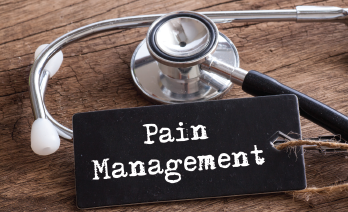
Lemau Studio / shutterstock.com
SNOWMASS VILLAGE, COLO.—The science underlying the neurobiology of chronic pain isn’t something rheumatologists often think about. However, pain is an important reason why patients see a rheumatologist. At the 2020 ACR Winter Symposium in January, Leslie Crofford, MD, gave two presentations addressing pain experienced by rheumatology patients, including a session on the fundamental mechanisms of pain and a discussion of pain associated with fibromyalgia.
Dr. Crofford is the Wilson Family Chair in Medicine, professor of medicine and pathology, microbiology and immunology, and chief of rheumatology at Vanderbilt University Medical Center, Nashville, Tenn. She has investigated pain mechanisms as part of her research on the systemic effects of inflammatory arthritis and the effects of central pain causing such conditions as fibromyalgia.
“It’s so important for rheumatologists to understand the different pathways involved in pain transmission, because we will be better prepared to accurately distinguish inflammatory versus central mechanisms of pain and prescribe the right treatment,” Dr. Crofford said.
Different Mechanisms for Pain
The source of pain in the body dictates where and how a patient experiences pain. During her session on different mechanisms of pain, Dr. Crofford explained the two primary pain mechanisms—peripheral and central.
Peripheral pain is initiated from a peripheral stimulus through the body’s nociceptors, such as skin, muscle, tendon or synovium, from which that pain signal is transmitted by primary afferent neurons to the dorsal root ganglion. From this point, the pain signal is transmitted to the spinal cord, then to projection neurons in higher centers within the brain.
When a nociceptor is repeatedly stimulated, sensitization occurs. This sensitization is defined as an “increased responsiveness and reduced threshold of nociceptive neurons in the periphery to the stimulation of their receptive fields,” Dr. Crofford said. Peripheral sensitization is often seen in conditions with chronic inflammation or joint damage, as in rheumatoid arthritis or osteoarthritis.
Central pain, caused by central sensitization, results from “increased responsiveness of nociceptive neurons in the central nervous system to their normal or subthreshold afferent input,” she explained. This neuron-mediated phenomenon causes neurons in the spinal cord to become more excitable, leading to a decreased pain threshold to noxious stimuli, an enhanced response to non-noxious stimuli or an increase in spontaneous nerve activity, resulting in such conditions as fibromyalgia.
Clinical Characteristics of Pain
With a clear understanding of peripheral and central pain mechanisms, a rheumatologist can ask a patient how they are experiencing their pain to better determine underlying causes and potential treatment approaches. Examples: If a patient describes their pain as difficult to localize or moving around different locations, this is likely the result of central pain and may be accompanied by somatic symptoms, such as fatigue, cognitive difficulties, depression and anxiety.
If a patient describes their pain as difficult to localize or moving from different locations, this is likely the result of central pain & may be accompanied by somatic symptoms, such as fatigue, cognitive difficulties, depression & anxiety.
Central pain or fibromyalgia is often comorbid with autoimmune diseases, such as rheumatoid arthritis or systemic lupus erythematosus. “In many patients with rheumatic diseases, the pain complaint is dissociated from the identifiable peripheral inflammatory or mechanical pain generator,” Dr. Crofford said, advising that “pain management must take the presence [or absence] of centrally maintained pain into account for optimal outcomes.”
Talking about Pain
“The patient and physician need to have a shared understanding of what neurobiological process is generating pain,” Dr. Crofford said. She suggested an in-depth conversation between the rheumatologist and the patient about how the patient is experiencing pain and related somatic factors, such as anxiety, can help the rheumatologist offer more effective treatment options. She described three approaches to better understand the mechanism causing a patient’s pain.
- Explore pain manifestations—Ask the patient to localize and describe their sites of pain. If the pain is easy to localize to a specific location, such as the wrist or knee, or worsens with movement or weight bearing, it’s likely to be inflammatory or mechanical in nature. If the pain is difficult to precisely localize, if it moves from site to site or if it is triggered by light touch, it could be the result of central pain.
- Discuss mental health effects of pain—Although chronic pain from a range of sources can cause mental and emotional symptoms, central pain is strongly associated with cognitive issues, depression and anxiety. If these issues are identified, providing treatment specifically aimed toward depression and anxiety may make pain treatment more effective.
- Assess risk factors for central pain—Because specific risk factors for central pain exist, Dr. Crofford suggested rheumatologists conduct an assessment of patients at risk for developing central pain or whom they suspect are experiencing central pain symptoms. This assessment should include a personal and family history of pain conditions, such as chronic headaches, temporomandibular joint disorder or irritable bowel or bladder disorders. A personal and family history of depression, anxiety or other mental health conditions should be assessed. In addition, understanding childhood and ongoing life stressors will assist the clinician in developing a treatment plan with specific functional goals.
Consider Treatment Choices
Based on the mechanism of pain, certain pharmacologic and non-pharmacologic treatments may be more effective. Dr. Crofford discussed her research and other published work on tailoring treatment to pain mechanism. Examples: For rheumatoid arthritis in which pain may be caused by inflammation that is sensitizing nerve receptors in joint areas, the focus should be on relieving synovitis with disease-modifying anti-rheumatic drugs.
For fibromyalgia, as discussed in her presentation on the condition, Dr. Crofford said patients are often treated with both non-pharmacologic and pharmacologic agents. Because pharmacologic treatments are often incompletely effective, patients may end up on combination therapy and are at risk for significant adverse effects.
“It is important to assess the effectiveness of any treatment and discontinue ineffective drugs or drugs whose benefits are outweighed by side effects,” she said.
Dr. Crofford also cautioned against the routine use of opioids and benzodiazepines. Because non-pharmacologic treatments are preferred, she also discussed study results for non-pharmacologic options to treat fibromyalgia, such as transcutaneous electrical nerve stimulation (TENS) therapy.1 Her study concluded TENS can be safely used in addition to other treatments to improve pain and fatigue in women with fibromyalgia. Aerobic or strengthening exercises and mind-body treatments such as tai chi and yoga are also recommended.
During her session on mechanisms of pain, Dr. Crofford was asked about the effects of cannabidiol on peripheral and central pain. She shared that the intersection of neural pathways activated by cannabinoids impact at the level of the central nervous system so may be more effective for central pain.
“Effects of cannabinoids on peripheral pain remain unclear. Certainly, studies are warranted,” she said.
Carina Stanton is a freelance science journalist based in Denver.
Reference
1. Dailey DL, Vance CG, Rakel BA, et al. A randomized controlled trial of TENS for movement-evoked pain in women with fibromyalgia. Arthritis Rheumatol. 2019 Nov 18. [Online ahead of print]

